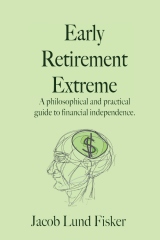This post was written in 2008 which was the first time in my adult life that the economy (I lived in) came up against resource constraints. What happens then is a bull market in commodities. This in turn quenches economic growth, and the prices drop again. Commodity volatility is a sign that the system is stretched to its limit. Below I suggest some diet changes which will make it easier to deal with the volatility (which is still there).
Food rationing has returned to the US for the first time since World War II. Along with the ongoing bet of which will reach $5/gallon first — gas or milk (I say gas)– this is one of an emerging list of symptoms that the idea of exponential growth of the economy and people on a finite planet is fundamentally flawed.
Exponential growth with its cute euphemism of the magic of compound interest, procreation, consumption, etc. can be incredibly destructive of whatever the system is growing into e.g. cancer into the human body. For instance, the cancer is likely doing fine until the host dies.
Now I have been expecting this but I was not expecting it this soon in the US. Lack of food is a fact of life for two billion people on the planet. Incidentally, for those who stopped counting world population numbers when they left school, there are now 6.7 billion people on the planet or 700 million more than 8 years ago, 2200 million more than when I was born, and twice as many as when my parents were born. Getting crowded yet?
It is possibly just a temporal fluke (currently) and eventually prices will adjust. Also the story may have been blown out of proportion. In my opinion now is not the time to go out and hoard bags of rice, but feel free to do whatever you like.
There are some things to keep in mind though. The government is actively subsidizing the in my opinion inane idea of putting food in the gas tank (ethanol). This is causing a food shortage in its own (the tortilla crisis). Furthermore it takes 15-20g of plant protein (and ungodly amounts of water) to make 1g of meat protein. This means that the price is meat is highly leveraged. However, just like oil is not the main limiting factor on the economy yet, fodder might not be the limiting factor yet on beef price. There’s also labor, land, taxes, etc. Nevertheless, this is a good time to start thinking about the kinds of foods it will be economically possible to eat when the population count hits 9 billion within the next 40 years especially given the increased competition with 2+ increasingly affluent people from Chindia.
I suggest doing what we do. Instead of making meat the main part of the meal, turn it into a condiment or perhaps leave it out altogether. Similarly, drop the milk. Finally, learn what grows locally and when it is in season and cook with those ingredients. This way one can adapt one’s current diet to something which is probably more healthy but more importantly corresponds to the future food situation. In addition learning to cook is a process that takes time, so if your diet is hopelessly American, start easy by perhaps learning how to bake a cookie without using premixed store bought powder. Try making your own sauce. Then go on and try meat free days and then meat free weeks. After that start learning about what is grown locally and cook more with those ingredients and less with imported ingredients. Finally, cook more with what’s locally in season rather than ingredients that have to be flown in. At this point food rationing should not incur major hardships.
Originally posted 2008-04-25 07:34:51.

